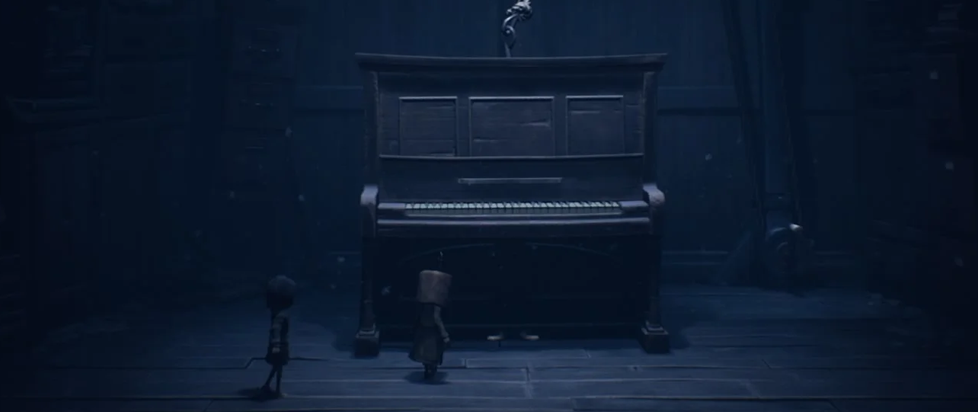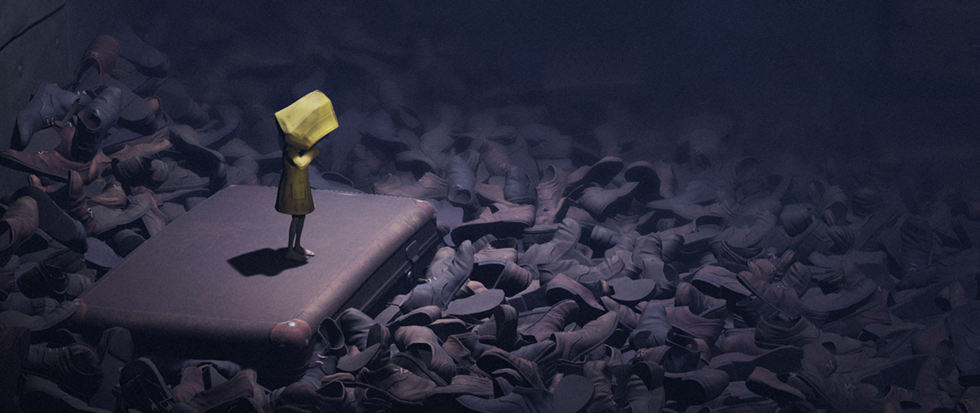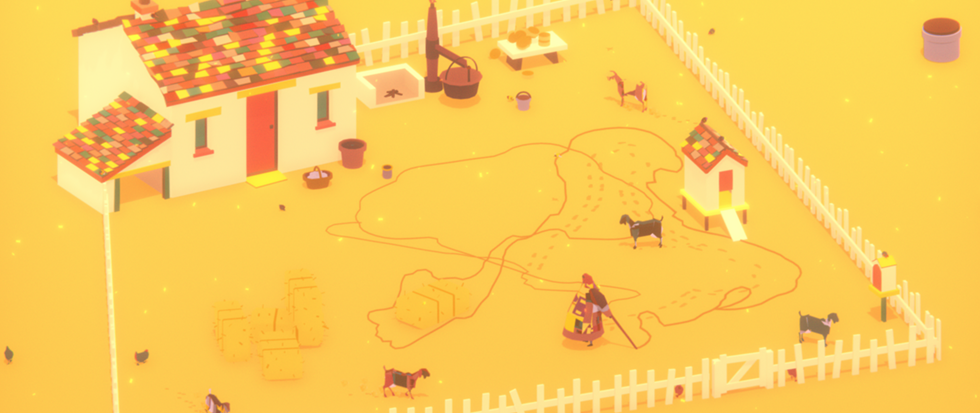
Little Nightmares II and the Case of Weak Imagery
There are many games where you are small and childlike and large, scary things will come out of the woodwork to try and kill you in sadistic ways. Tarsier Studios has basically made an entire studio off of the concept. The first Little Nightmares was that but with more of the grotesque — guts and squish and rot. Little Nightmares II, out this year, follows in that pattern.
The first Little Nightmares was a game that seemed better suited as a series of Twitter gifs than an actual game. While the visual design was quite strong, the puzzles (which were the bulk of gameplay) were incredibly weak and actively dragged down play. The games’ 2.5D perspective and unforgiving save points meant that deaths were frequent and pointless in the least interesting way possible, which is to say that your character would get caught on the geometry on a level while running away from a boss and you would then die, having to repeat a long stretch of scene again. Here is a review from 2017 to go over all of these salient points.
Little Nightmares II is a stronger game in the first three acts (the game is split into five). The second act, which takes place in a school, is by far the strongest stretch of the game in the way that it carries the theme of a place of learning lost in disarray. While the School introduces us to the weakest mechanic of the game — melee fighting — it does so in an environment chock full of feral child Bullies, the long-necked and unsettling Teacher, and a few of the best scenes of the game.
The five acts of the game generally have a very disconnected feel aside from the general sense of “these things are creepy.” The first game had this problem as well, moving from horror movie house to geisha warship, but here the five areas have a relatively distinctive feel that makes them feel like completely different games of disparate qualities. In a game like Mario there’s less of a requirement for there to be consistency of tone between levels; you can have your ice levels immediately after your forest levels without there being any sort of concern. With something with a heavier emphasis on narrative however, it feels like there should be at least a more consistent visual language between worlds.
Take these two shots, which are from two separate levels, the Wilderness at the opening and the Signal Tower at the end:

Obviously there can be changes between worlds in a game, but there is also a significant difference between levels of reality. While the world in Little Nightmares 2 is fundamentally grotesque there’s still something about it that feels oddly grounded in a form of reality — until you reach the Hospital. At this point, you suddenly are presented with a room with no clear bottom or top and suspended hospital beds that float almost without support. This (and the Signal Tower level that concludes the entire game) are easily the most jarring in terms of being removed from even the reality of the world established in Little Nightmares.
Not every game has to say something with its imagery, but it’s clear that Little Nightmares II wants desperately to be saying something. In this it fails rather utterly. Frequently it intones the kind of heavy-handed images and themes that on their own would dominate a single game, let alone en masse, including but not limited to – the Rapture, corporal punishment at schools, suicide, propaganda, “Black Thursday,” mental health, child death, mass media as a tool for brainwashing, etc. Again there’s nothing inherently wrong with these themes or images, but there’s something to be said for the desensitization one feels towards a noose after the fiftieth time that it’s used as a simple way to get across a room.
Everything in Little Nightmares II is monstrous. If it’s been alive at some point, it’s rotting now. If it can be falling apart, it definitely is. Disarray? Without question. This is an aesthetic choice, obviously, but it is one that is frankly vapid. The audience isn’t really given any chance to see the world clean so it quickly becomes the norm. There is no shock to a pile of guts the fifth or sixth time. The hundredth is just set dressing. Why is the world falling apart? If there is lore here it is buried so deep as to be impenetrable and opacity is not depth. People enjoy thinking about text so much that they sometimes get tricked into believing that simply being asked to imagine what the reality is supposed to be is intelligent writing, but it isn’t.
This is incredibly tedious.
Little Nightmares II is deeply linear, which makes sense for a game that is fundamentally narrative heavy. But there’s not a lot of secrets to be found here. This ties in to the same problem with its ultimately shallow lore and text. The trick to its impression of depth is in the heavy handed use of powerful imagery and in its promise of story just over the horizon. But there isn’t additional lore, at least not in a way that’s accessible to the player without digging into additional meta. The secret ending, attained by collecting all of the glitched children throughout the game, is effectively the same as the main ending. There aren’t more secrets to be found by digging through the levels, at least not the kind of world building that would make a game like this feel as lush as the visuals promise.
Ultimately Little Nightmares II is a stronger game than its predecessor mechanically. While it has a weaker puzzle design than one would like — there is a progression of four identical “puzzles” in the final level that are literally just “follow the music/particle effect” — deaths and the geometry in general are a lot more forgiving in this iteration of the game. The game succeeds at its best when it allows itself to stop and highlight excellent enemy design, like the Hunter or the Teacher, or when it highlights the verticality or complexity of its own levels.
One of the strongest moments of the game comes in the second level, where you and your partner character find a piano in a room. Using what has to be the strongest crank in the world, you move the piano into the air, dropping it back heavily onto the ground. Jumping onto the piano keys gives a satisfying, if discordant noise, before you and your fellow character jump on top of the piano repeatedly, pushing it down a full level into the room below. Now the keys sound even worse when you jump on them, a consequence of the piano dropping through several stories of building. Later, when you’re about to crush in a Bullies skull with a pipe, your buddy will distract said Bully by playing on that same piano. It’s a great series of moments, tied to both the emotions of being a kid and playing around on a piano, and the discordant horror of the actual situation. If Little Nightmares II was more of that, it would be a great game.





